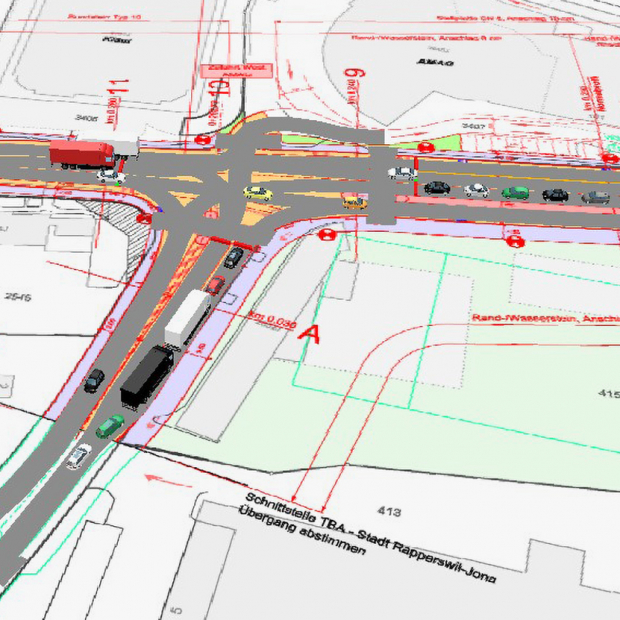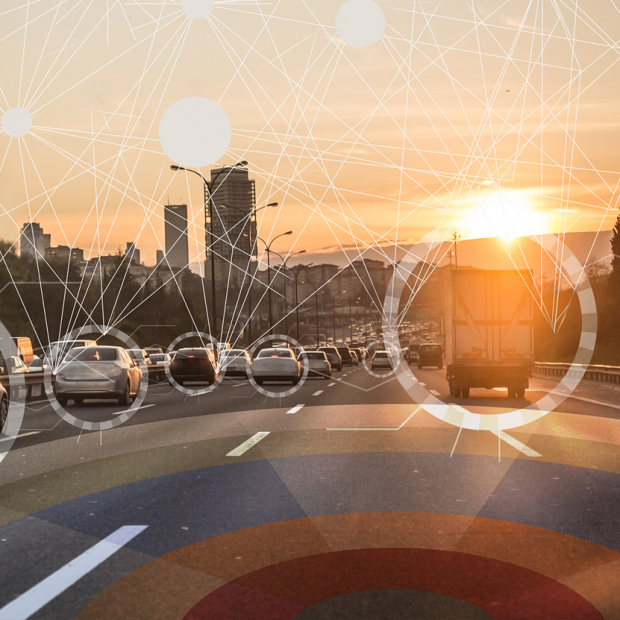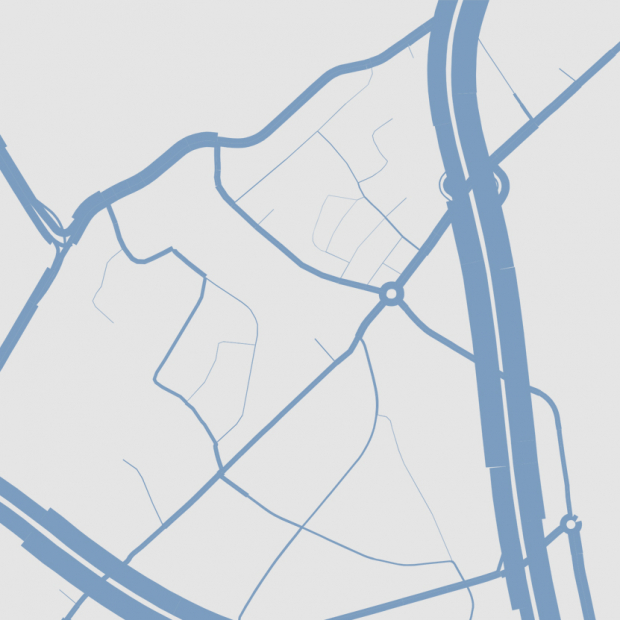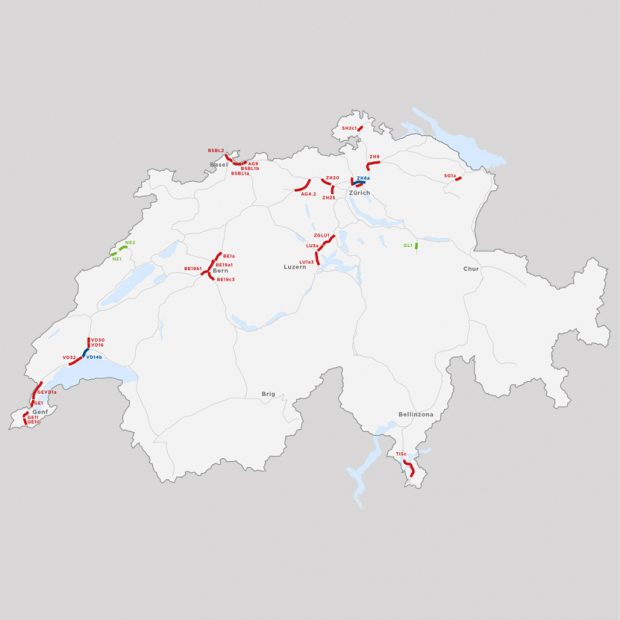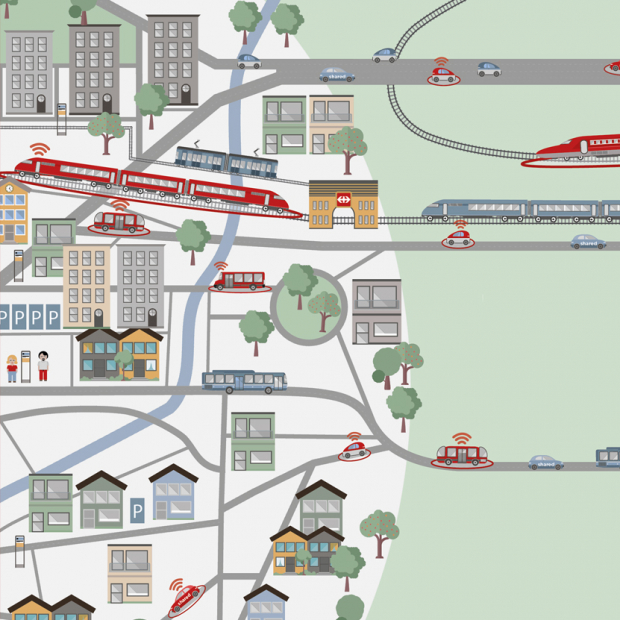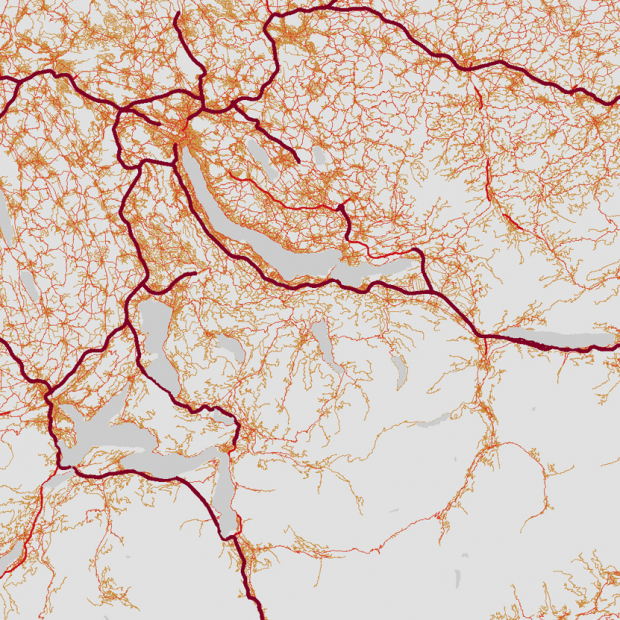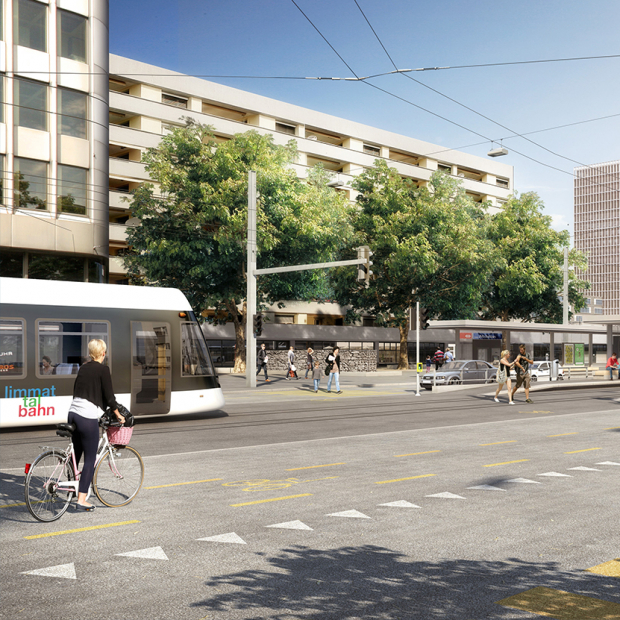

Self-driving vehicles and traffic engineering
Automated driving technology has the potential to fundamentally change our transportation systems. Working together with BaslerFonds and numerous other partners, we carried out an earlier study to assess the impact of self-driving vehicles on our transportation system, our transportation behavior, our infrastructure needs and our approach to spatial development. In a follow-up study, EBP now takes a closer look at the relationship between self-driving vehicles and traffic engineering, traffic management and road infrastructure.
In light of advances made in the area of automated driving, cantons and cities throughout Switzerland are busy examining important transportation-related issues at strategic, technical and spatial-planning levels. How do self-driving vehicles behave? What effects will such behavior have on the capacity of our transportation infrastructure? What types of infrastructure expansion will be necessary? And what can we do to have a positive impact on traffic flow?
The impact of self-driving vehicles on capacity
In our follow-up study, we outline the ways in which automated driving can be expected to influence key transportation variables. The capacity of our infrastructure will ultimately depend on the resulting time gaps between vehicles on the road. One common assumption in the traffic-engineering literature is that a higher percentage of self-driving vehicles on the road and a greater degree of V2V and V2I connectivity will translate into enhanced capacity and greater traffic-flow stabilization. Using data available in the European traffic-engineering literature, we explain the magnitude of these effects on high-capacity roads and city streets.
Traffic management and transportation demand management tools
While advances in automated driving technology introduce a range of exciting opportunities, they also introduce a number of issues that will need to be settled in the area of traffic management. Many existing traffic management tools take on greater significance while the need for new tools also becomes apparent. We offer a description of these tools and their relative merits. We distinguish between different prerequisites and the influence on the individual mobility. Our findings represent a wide array of measures that can allow us to exploit the opportunities associated with automated driving while at the same time managing the challenges.
Recommendations for public agencies
Based on our findings, we have developed a catalogue of recommendations that can be used by public agencies. These recommendations include ways of supporting automated driving technology so as to better exploit its advantages. We have also outlined ways of approaching «Traffic Management 4.0» so as to secure political objectives related to transportation and clarify our future transportation-infrastructure needs.
Follow-up studies as a part of a total package
The project was a part of a comprehensive study on the large-scale introduction of automated vehicles. The study gave rise to a preliminary analysis and revealed a need to conduct follow-up studies relating to the following subjects:
- Effects on road safety
- Data and IT infrastructures
- New offerings for shared transportation
- Freight transportation and city logistics by road
- Impact on resources, environment and climate
- Challenges for cities and other urban areas
Study results
We compiled our findings in a synthesis: Large-Scale Introduction of Automated Vehicles – Applications and Effects in Switzerland, Report of September 5, 2018





